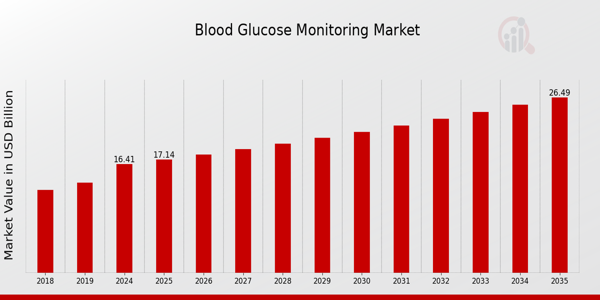Genres:Artbook
🇬🇧English
< 30 votes
0 votes
5
00.0%4
00.0%3
00.0%2
00.0%1
00.0%The Blood Glucose Monitoring Market is evolving rapidly in response to the growing global burden of diabetes. With an increasing emphasis on personalized healthcare and proactive disease management, this market is gaining strong momentum among healthcare providers, device manufacturers, and end-users alike.
The prevalence of diabetes continues to climb, driven by factors such as sedentary lifestyles, unhealthy diets, obesity, and aging populations. According to the International Diabetes Federation, over 537 million adults were living with diabetes globally in 2021, and the number is projected to reach 643 million by 2030. In this context, accurate and timely blood glucose monitoring has become essential in managing the disease and preventing complications such as neuropathy, cardiovascular diseases, and kidney failure.
The market for blood glucose monitoring is broadly divided into two categories—self-monitoring blood glucose (SMBG) devices and continuous glucose monitoring (CGM) systems. While SMBG devices such as glucose meters, lancets, and testing strips have been used for decades, CGMs are transforming how patients and clinicians view glucose trends. These systems provide real-time data, allow trend tracking, and minimize finger-prick testing. Their integration with mobile apps and cloud-based platforms also enables remote monitoring and better decision-making.
Technological advancements are playing a pivotal role in reshaping the market landscape. Innovations like needle-free sensors, smartphone connectivity, AI-driven analytics, and integration with insulin pumps have made monitoring more convenient and less intrusive. Companies like Abbott, Dexcom, Medtronic, and Roche are leading the way in innovation, offering compact and easy-to-use solutions that improve patient adherence and engagement.
One of the most significant trends is the rising demand for wearable and non-invasive devices. Patients are increasingly looking for hassle-free options that fit into their daily routines. CGM systems that can be worn for several days with minimal maintenance are gaining popularity, especially among younger populations and tech-savvy users. Moreover, the use of machine learning algorithms in interpreting glucose patterns is helping patients receive personalized insights and predictive alerts.
From a regional perspective, North America dominates the blood glucose monitoring market due to its high diabetes prevalence, advanced healthcare infrastructure, and strong insurance coverage. However, Asia-Pacific is emerging as a lucrative region, driven by a large diabetic population, rising awareness, and expanding access to healthcare technologies in countries like India and China.
Reimbursement policies, regulatory approvals, and pricing remain key challenges. While developed markets have supportive frameworks for CGM adoption, many developing countries still face affordability issues and lack of awareness. Market players are focusing on cost-effective innovations and strategic collaborations to expand their reach in these regions.
Looking ahead, the future of the Blood Glucose Monitoring Market lies in personalized, data-driven, and connected solutions. As digital health continues to merge with traditional diabetes care, we can expect a more patient-centric approach that not only monitors glucose but also predicts fluctuations, supports lifestyle management, and enables remote care.
Views
Total: 0/360 days: 0/180 days: 0/90 days: 0/30 days: 0/7 days: 0/24 hours: 0/12 hours: 0/6 hours: 0/60 minutes: 0
MPark Page Creation
U.1283332 at GMT
Chapters
Reviews(0)
Comments(0/0)
MPLists(0)
